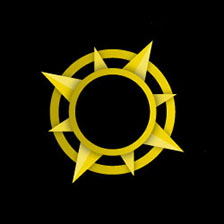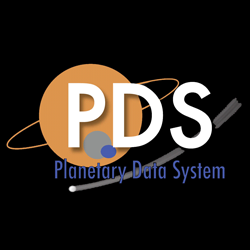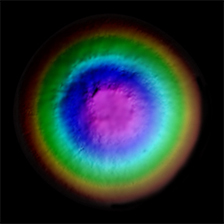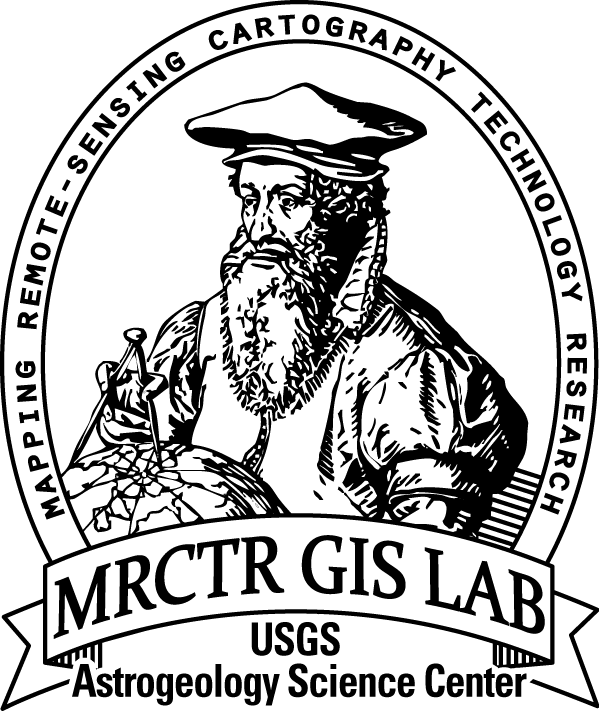Pluto System Craters Database v1 Robbins
- Primary Authors
- Stuart J. Robbins
- Originators
- Icarus
- Publisher
- USGS Astrogeology Science Center
- Publication Date
- 2016-10-05
- Abstract
- Product Information: These files represent a "consensus crater database" for Pluto, Charon, Nix, and Hydra. The database was constructed by several individuals who examined images independently and repeatedly. Images were from the Long Range Reconnaissance Imager (LORRI) (Cheng et al., 2008) and Multispectral Visible Imaging Camera (MVIC) (Reuter et al., 2008) cameras on board NASA's New Horizons spacecraft. Every image that resolved each body more than â15 pixels across was examined for craters. Candidate features from each observation by each person were combined and averaged for a consensus dataset for each body. Imagers were individual unprojected, individual projected, and mosaics. Additional Description from the Conclusions of Robbins et al. (2017): Our work demonstrates that there is variability in mapping impact craters based on available data and simple, inherent differences in individuals. If we were to use the range of crater densities found, we would derive ages that vary by ±~2Ã, and small deviations from a production function model might be interpreted as a resurfacing event as opposed to a single researcher's natural, stochastic variation. Consequently, this consensus dataset is likely to be the most robust to-date for any set of solar system bodies, for it represents the use of multiple images, analysis by multiple researchers, and further verification of the combined results. We recommend its use in future crater-based investigations of Pluto, Charon, Nix, or Hydra, until future spacecraft can return further data. Specifically, we recommend that this database be used as a reference set for researchers wanting to do Pluto-Charon system crater research, either used in its entirety if the researcher is confident with our crater assessment, or as a cross-check to ensure the researcher has at least identified and measured the same high-confidence craters in this work. Version Control: Control network for Pluto is from April 05, 2016, and for Charon is August 31, 2016. If you use this database and find any errors or have questions, please do not hesitate to contact the main author, Robbins. You can also ask to be notified if there are any updates, such as tie to a new coordinate system. Mission and Instrument Information: Pluto was discovered on February 18, 1930 at Lowell Observatory in Flagstaff, Arizona. It was discovered by an observing assistant, Clyde Tombaugh, as he assisted the search for planet X which was believed (incorrectly) to be responsible for anomalies in the orbits of Uranus and Neptune. At about half the size of Earthâs moon, Pluto has been officially re-classified as a dwarf planet. It is in the Kuiper Belt and orbits the sun at an average distance of 3.6 billion miles. Pluto has five moons, the largest of which is Charon. Pluto and Charon orbit each other like a double planet system. New Horizons spacecraft launched onboard a Lockheed Martin Atlas V rocket at Cape Canaveral Air Force Station in Florida on January 19, 2006. The main objectives of New Horizons was a Pluto Flyby and a Kuiper Belt Object Flyby. The science payload includes seven instruments: visible and infrared imager/spectrometer (Ralph), ultraviolet imaging spectrometer (Alice), Radio science EXperiment (REX), Long Range Reconnaissance Image (LORRI), solar wind around Pluto (SWAP), Pluto Energetic Particle Spectrometer Science Investigation (PEPSSI), and Student Dust Counter (SDC). New Horizons passed Mars on April 7th, 2006 and received a gravity assist from Jupiter on Feb 28th, 2007. The spacecraft was put into hibernation mode starting June 28th, 2007 and it reached the halfway point to Pluto on February 25th, 2010. Ground controllers revived New Horizons from hibernation on December 6th, 2014. At that time, it took four hours and twenty-five minutes for a signal from the spacecraft to reach Earth. New Horizons began its approach to Pluto on January 15th, 2015 and flew about 4,800 miles above the surface of Pluto on July 14th, 2015. The entire series of data collected during New Horizonsâ encounter with Pluto and Charon is about 6.25 gigabytes and was transmitted to earth at about 1-2 kilobits per second over a distance of roughly 4.5 light-hours from Earth. As of March 2019, New Horizons was about 4.1 billion miles from Earth and continuing its journey deep into the Kuiper Belt at nearly 33,000 miles per hour. The New Horizons mission is currently extended through 2021 with the objective to explore Kuiper Belt objects. References: Cheng, A. F., Weaver, H. A., Conard, S. J., Morgan, M. F., Barnouin-Jha, O., Boldt, J. D., Cooper, K. A., et al. (2008). Long-Range Reconnaissance Imager on New Horizons. Space Science Reviews, 140(1-4), 189â215. https://doi.org/10.1007/s11214-007-9271-6 Reuter, D. C., Stern, S. A., Scherrer, J., Jennings, D. E., Baer, J. W., Hanley, J., Hardaway, L., et al. (2008). Ralph: A Visible/Infrared Imager for the New Horizons Pluto/Kuiper Belt Mission. Space Science Reviews, 140(1-4), 129â154. https://doi.org/10.1007/s11214-008-9375-7 Recommended Citation: Robbins, S. J. et al. (2017). Craters of the Pluto-Charon System. Icarus, 287, 187-206. https://doi.org/10.1016/j.icarus.2016.09.027
- Purpose
- To catalog crater locations and size for the Pluto-Charon System (Pluto, Charon, Nix, and Hydra).
Contact and Distribution
- Format
- Tabular Data
- Access Constraints
- none
- Access Scope
- PDS
- Use Constraints
- Please cite authors
- Edition
- Control network for Pluto is from April 05, 2016 and for Charon is August 31, 2016
- Supplemental Information
- http://www.sciencedirect.com/science/article/pii/S0019103516306133?
- Native Data Set Environment
- Astrogeology Theme
- Craters
- Mission Names
- New Horizons
- Instrument Names
- LORRI, MVIC
- Online Package Link
- https://astrogeology.usgs.gov/search/map/pluto_system_craters_database_v1_robbins
- External File Size
- 169645
- Online File Link
- http://astropedia.astrogeology.usgs.gov/download/Pluto/Research/Craters/Craters_PlutoCharon_System_Robbins.zip
- Contact Address
- 2255 N. Gemini Drive
- Contact City
- Flagstaff
- Contact State
- AZ
- Contact Postal Code
- 86001
- Contact Email
- astroweb@usgs.gov
- Currentness Reference
- Ground condition
- Progress
- In Work
- Update Frequency
- As needed
Lineage
- Process Date
- 2016-04-05
- Source Title
- Craters of the Pluto-Charon System
- Source Online Linkage
- http://www.sciencedirect.com/science/article/pii/S0019103516306133?
- PDS Status
- PDS 4 In Progress
- Attribute Accuracy Report
- Best Effort
Geospatial Information
- Target
- Pluto
- System
- Pluto
- Minimum Latitude
- -90
- Maximum Latitude
- 90
- Minimum Longitude
- 0
- Maximum Longitude
- 360
- Direct Spatial Reference Method
- Point
- Object Type
- Grid Cell
- Quad Name
- Map Projection Name
- Simple Cylindrical
- Latitude Type
- Planetocentric
- Longitude Direction
- Positive East
- Longitude Domain
- 0 to 360














